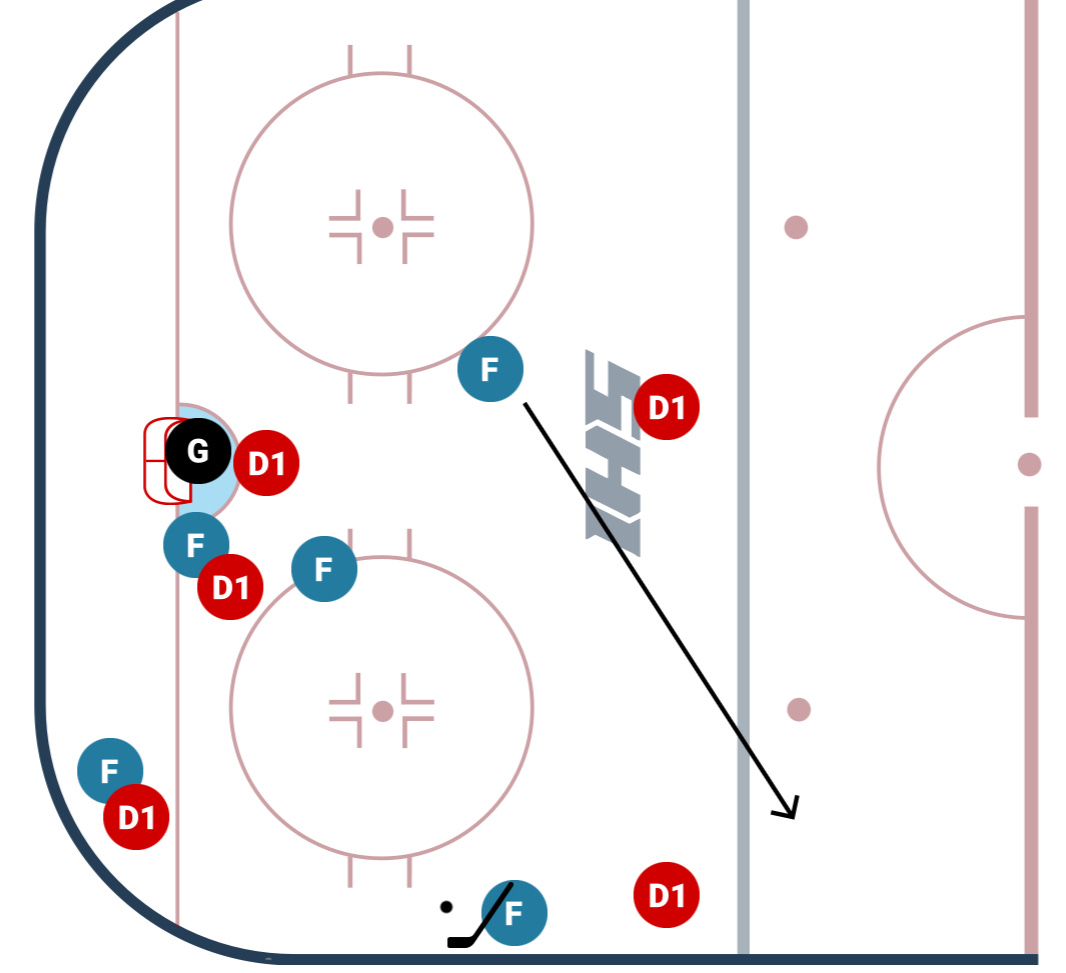During a breakout, the weakside winger typically has two options:
Stay weakside/go north
Slash across the ice to the strongside
Staying patient on the weakside will be a story for another day. Today, let’s take a look at the ‘weakside slash.’ Getting the puck is obvious, so we are going to focus on the weakside slash where they don’t receive the puck. You’ll notice how it creates great conditions for teammates to operate under, and, if things break right, provide an opportunity for a breakaway if the defensive pair isn’t communicating.
Details within the slash
The weakside slash should be behind the strongside defenseman to ask the question of the strongside defenseman, “Do I hold the offensive blueline or retreat?”
Holds the blueline = space is behind for a small chip or pass.
Retreats = space is in front. This allows the strongside winger to face less pressure on the strongside of the ice.
Related:
With the slash, the winger should also be aware to track the pressure from the weakside defenseman, who is originally fully responsible for guarding them. Is that weakside defender player tracking across or giving space?
Timing is critical as the weakside slashing winger risks causing congestion and becoming flat-footed if not well-timed. It’s better to be a little late than a little early. Ideally, the slasher will be picking up speed into the puck.
If the slasher doesn’t receive the puck, the player should roll their routes to maintain speed and prepare for the next involvement.
Video Examples
Watch for the strongside defenseman scanning where he notices the weakside slash that causes him to leave the area… and leaving a lot of room to operate!
Benefits of the Weakside Slash
The main benefit you see is stretching the ice vertically, directly toward the opposing team’s net with urgency. The opposition has limited time to organize their defense and get their player back above (defensive side) of the puck/opponents/checks. Note #29 Blue in the clip.
This movement often leads to stretching the ice to threaten more space; thus creating further space for other teammates, even if the weakside winger does not receive the puck. Notice how far back the defensemen have been pushed back and how much space is available for the rest of the team in white.
There is a chance that the weakside winger can lead to an odd-person situation if a teammate(s) quickly beats their check up the ice. Or, the weakside winger can find a seam to get behind the opponent's defensive structure for a breakaway.
When done well, the weakside winger slash creates issues for the opposition while speeding up the attack through its direct play up ice. The slash forces defenders to react and requires coordination of coverage… often leading to offensive chances directly or for teammates.
Situational/Tactical Considerations
Since the weakside slash seeks to exploit space behind the strongside defensemen, the weakside slash across is effective when the weakside defenseman attempts to pinch.
While direct, many coaches enjoy employing this tactic as it’s an option that minimizes long cross-ice passes through the middle.
Quick Summary:
Get behind the strongside defenseman
Timing is crucial; accelerate into the puck
Track weakside ‘D’ pressure
Roll your routes to maintain speed if the slash doesn’t result in receiving the puck
Further Reading



